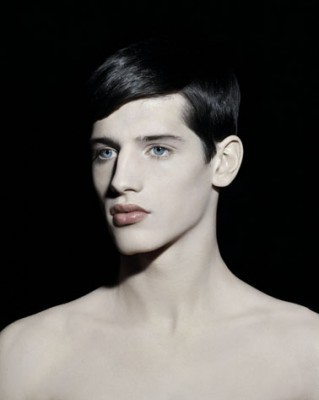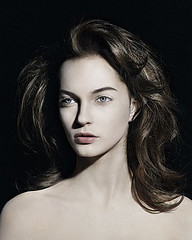2009年3月5日星期四
2009年2月9日星期一
Uta Barth
uta barth

One thing I sometimes think happens is that we see work by a photographer and we can see there is something there. It immediately says something to us. But somehow we don't quite like it (though perhaps like isn't quite the right word). Each time we come across it we say to ourselves "oh yes, that stuff, I remember that". Then - sometimes quite a while later - it almost imperceptibly just clicks. 
For me that's the case with Uta Barth's photographs. And right now I'm going "ah yes - now I get it" and want to look at more of it. It's probably all in response to the how the areas and ideas I'm investigating right now resonate with the things she has done in her work. But there's a sort of double pleasure to it. Coming to the realisation that yes, your suspicion was right, there was something to it. But mostly, the excitement of pouring over some pictures that you had probably seen before and yet now they seem fresh and intriguing in a way you couldn't quite perceive before.

From Uta Barth: In Between Places: "Deceptively simple, Uta Barth's photographic works question the traditional functions of pictures and our expectations of them. By photographing in ordinary anonymous places - in simple rooms, city streets, airports and fields - Barth uses what is natural and unstudied to shift attention away from the subject matter, and redirect focus to a consciousness of the processes of perception and the visceral and intellectual pleasures of seeing....
...Uta Barth provides a compelling look at the nature of our own experience.Her beautifully composed photographs, most often created in places that seem somehow familiar, prompt our consciousness of visual sensations and a deeper consideration of what looking really means.
...Barth has used photography exclusively in her aesthetic projects, experimenting with depth of field, focus and framing to create photographs that are suggestive rather than descriptive, alluding to places rather than describing them explicitly. Her interiors and landscapes engage the viewer in an almost subliminal way, testing memory, intellect and habitual responses..."

A few tasters: ...We assume that the photographer observed a place, a person, an event in the world and wanted to record it, point at it. There is always something that motivated the taking of a photograph. The problem with my work is that these images are really not of anything in that sense, they register only that which is incidental and peripherally implied... I have never been interested in making a photograph that describes what the world I live in looks like, but I am interested in what pictures (of the world) look like.... My primary project has always been in finding ways to make the viewer aware of their own activity of looking at something (or in some instances, someone.) ...

2009年1月26日星期一
2009年1月22日星期四
Esther Stocher

nstallationsansicht geometrisch betrachtet, Museum Moderner Kunst Stiftung Ludwig, Wien, 2008
Wood, dispersion, 939 x 3416 x 448 cm, Photo: Pez Hejduk
 | ||||||||||||||||||||||||||||||||||||||||||||||||||||
| | ||||||||||||||||||||||||||||||||||||||||||||||||||||
| Installationsansicht Abstract thought is a warm puppy, 2008 Raumarbeit mit Holzstäbenund Dispersion, 10,75 x 12,10 x 3 m, CCNOA - Center for Contemporary Non-Objective Art, Brussels, Photo: Sacha Georg
|
2008年12月15日星期一
Victor Burgin
Victor Burgin (born 1941) is an artist and a writer.
Burgin was born in Sheffield in England. He studied art at the Royal College of Art, in London, from 1962 to 1965 (A.R.C.A., 1st Class, 1965) before going to the United States to study at Yale University (M.F.A. 1967). He taught at Trent Polytechnic from 1967 to 1973 and at the School of Communication, Polytechnic of Central London from 1973 to 1988. From 1988 to 2001 Burgin lived and worked in San Francisco. He taught in the History of Consciousness program at the University of California, Santa Cruz, where he became Professor Emeritus of History of Consciousness. In 2000 he was Robert Gwathmey Chair in Art and Architecture, The Cooper Union for the Advancement of Science and Art, New York. In 2001, he was appointed Millard Professor of Fine Art at Goldsmiths College, University of London. Burgin has also taught at the European Graduate School in Saas-Fee, Switzerland. In 2005 he received an Honorary Degree of Doctor of Sheffield Hallam University (Hon. DUniv).
Burgin first came to attention as a conceptual artist in the late 1960s.[citation needed] He has worked with photography and film, calling painting "the anachronistic daubing of woven fabrics with coloured mud".[citation needed] His work is influenced by theorists and philosophers such as Karl Marx, Sigmund Freud, Michel Foucault and Roland Barthes.[citation needed]
In 1986, Burgin was nominated for the Turner Prize for his exhibitions at the Institute of Contemporary Arts and Kettle's Yard Gallery in Cambridge and for a collection of his theoretical writings (The End of Art Theory) and a monograph of his visual work (Between).







 | |
william eggleston master
William Eggleston (born July 27, 1939) is an American photographer. He is widely credited with securing recognition for color photography as a legitimate artistic medium to display in art galleries.







































